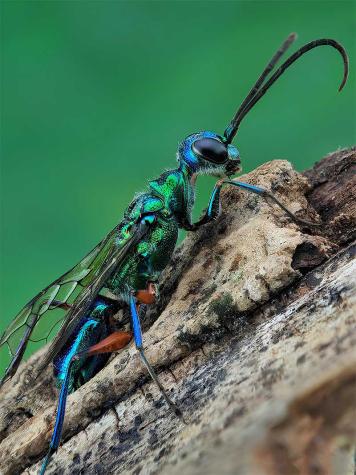COLUMBIA, Mo. – For Halloween, University of Missouri Extension urban entomologist Emily Althoff celebrates the creepy qualities of some insects and fungi.
For example, many fungi in the genus Ophiocordyceps can parasitize insects, turning them into “zombie bugs” that help the fungi reproduce. “They prey most often on beetles, ants, dragonflies and butterflies,” says Althoff. Infected insects wander aimlessly up a twig or stem and release spores that are distributed by the wind.
This toxic relationship inspired the popular video game and television series “The Last of Us.” Scientists are still trying to understand the fascinating details of how zombie fungi do their deadly deeds, but you can rest assured that the fungi don’t affect humans, says Althoff.
Then there are the “brainwashing” wasps. Jewel wasps, known for their beautifully colored bodies, lie in wait for unwitting cockroaches to stroll by. The female wasp temporarily paralyzes the cockroach by injecting a specialized neurotoxic venom into its central nervous system. When the cockroach regains its ability to move, the female wasp leads it into a dark tunnel. “If you were watching this on television, this is the part where you would be screaming ‘RUN!’” says Althoff. But the roach does not run. Instead, the wasp larvae devour him.
If you can’t make it to a haunted house this Halloween, Althoff suggests going on a mummy hunt in your backyard instead. “While aphids may be gardeners’ worst enemies at some points in the season, spotting an aphid mummy is always a sight for sore eyes,” she says.
The presence of aphid mummies indicates that parasitic wasps in the group Aphidiinae are helping with integrated pest management in your garden. These tiny wasps lay their eggs inside of aphids. After the eggs hatch, the wasp larvae feed on the aphid from within. When the wasps emerge from the aphid, they leave behind a husk that scientists call an aphid mummy.
